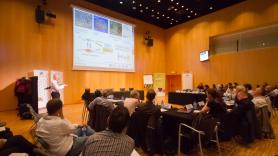3. Animal models (still) necessary
Despite all the advances in new models, animals are still considered necessary and are a constant in research. Huge projects have even been created to delve deeper into the information they give us. For example, to untangle the function of all those genes we still don’t understand, which is the majority. And, while we’re at it, to check similarities between their functions in humans and mice, the sword of Damocles of animal testing.
This is the case, for example, of the International Mouse Phenotyping Consortium (IMPC), a huge consortium whose aim seems simple but is really quite complex: to check, one by one, the effects of eliminating or modifying each of the 20,000 genes in a mouse. So far, they’ve finished 2,500, and hope to hit 5,000 within the next few years. These studies have helped find model mice for various rare diseases that could hardly be studied, checking that at least two thirds of the genes don’t have a unique function. The organizers of the project proposed it serve as a foundation for the ambitious Initiative on Precision Medicine launched by President Obama to analyze a mind-blowing amount of data from at least one million people over the coming years.
Animal testing is also used to do research into biological issues that seemed to be a closed case, like inheriting acquired traits. As Martin M. Hrabe de Angelis, director of the Institute for Experimental Genetics in Munich, explains, “9% of the population is diabetic. By 2030, this figure is expected to hit 64%.” It is such a huge epidemic that there may be influencing factors beyond lifestyle. De Angelis, founder of the German Mouse Clinic, which is also a member of the IMPC, is studying whether there is a basis for “non-genetic transfer of the disease, depending on diet” (so, epigenetic). Some studies indicate that grandparents with a diet high in fat tend to have diabetic grandchildren, and studies with animals have shown several times that if fathers (only men, so there is no impact from gestation) eat that type of diet, their children are more likely to have diabetes. And this trend could be passed down through changes in sperm.
But none of this is clear yet. Nature tends to protect itself from these changes: what is known as the Weissmann barrier, for example, when gametes are formed (eggs and sperm) nearly all markers on an individual’s DNA are erased. Perhaps some may be passed on, but this isn't easy to study, as other factors must be taken into account, such as uterine environment, difference in care received and the composition of breast milk. For now, as Josep Samitier confirms, “Some studies could be conducted without animals, thus rationalizing and decreasing their use. But they are still needed, at least before a drug can be tested in humans.”



